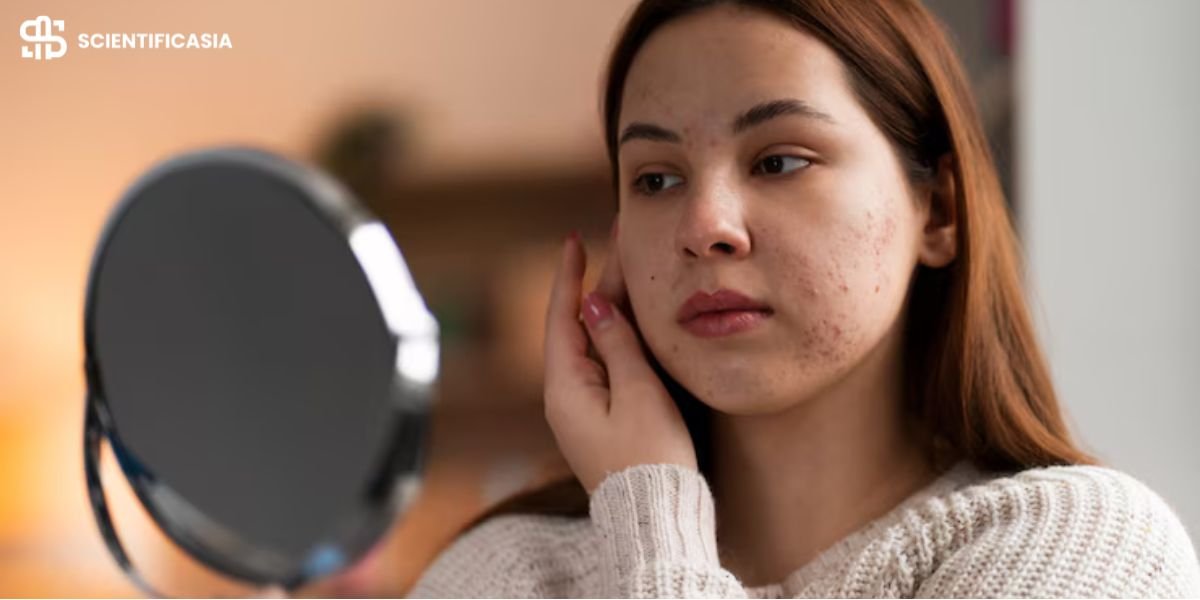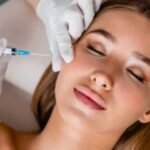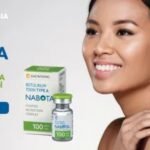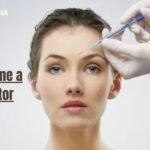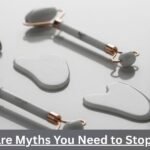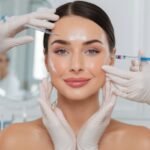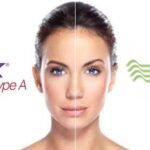Acne vulgaris, a dermatological condition affecting the pilosebaceous units of the skin, continues to be a pervasive concern, impacting an estimated 85% of adolescents and a significant percentage of adults well into their 30s and beyond. Beyond its visible manifestations, acne’s profound influence on mental health, leading to anxiety and depression, and reduced self-esteem—underscores the critical need for effective management strategies. This article serves as a comprehensive, medically informed guide to navigating acne. We will explore the concept of acne clearskinstudy, presenting it as a holistic and evidence-based pathway to achieving and maintaining clear skin, integrating the latest scientific understanding, established treatments, and adjunctive support.
Understanding Acne: Etiology and Pathophysiology
The development of acne is a complicated interaction among genetic predisposition and environmental factors, converging on four primary pathogenic mechanisms within the pilosebaceous unit:
- Androgen-Induced Sebum Hypersecretion: Hormonal fluctuations, particularly increased androgen activity during puberty and in conditions like Polycystic Ovary Syndrome (PCOS), stimulate sebaceous glands to produce excessive sebum. This oily secretion can become thick and waxy, contributing to follicular occlusion.
- Follicular Hyperkeratinization: An abnormal shedding and accumulation of dead skin cells within the hair follicle lining leads to the formation of a plug, trapping sebum and creating an anaerobic environment.
- Cutibacterium acnes (formerly Propionibacterium acnes) Proliferation: This bacterium, normally residing on the skin, thrives in the oxygen-deprived, lipid-rich environment of the clogged follicle. Its rapid proliferation and metabolic byproducts trigger a strong inflammatory response.
- Inflammation: The body’s immune system reacts to the clogged follicle contents and C. acnes by initiating an inflammatory cascade. This leads to the characteristic redness, swelling, and pain of inflammatory lesions.
Latest Insights (2024-2025): Recent research continues to highlight the intricate role of the skin microbiome beyond just C. acnes, exploring how imbalances in the overall microbial community might contribute to inflammation. Furthermore, new studies are refining our understanding of how systemic inflammation and even neuro-inflammation pathways are involved in acne pathogenesis, moving beyond a purely localized view.
Other influencing factors include:
- Genetics: A strong familial link to acne suggests significant genetic predisposition.
- Dietary Influences: While not a direct cause, growing evidence from systematic reviews (e.g., studies presented at EADV 2024) indicates a “yes and no” answer regarding diet. Many observational studies and some interventional trials suggest a positive association between high-glycemic index diets and dairy (especially skim milk and whey protein concentrates) with acne severity. The relationship is thought to be mediated by insulin-like growth factor-1 (IGF-1) and mTORC1 pathways, which stimulate sebum production and inflammation. As Dr. David E. Cohen, a dermatologist at NYU Langone Health with extensive experience in environmental dermatology, often notes, “While diet isn’t the sole cause, for many, it can be a significant trigger, and ignoring it is missing a piece of the puzzle.”
- Stress: Recent studies (e.g., JAAD Int., 2024; Dermatology and Therapy, 2024) affirm the significant link between psychological stress and acne exacerbation. Stress hormones like cortisol can stimulate sebaceous glands and increase inflammation. As one medical student in a 2024 study shared, “During exam season, my breakouts were always worse, no matter how consistent I was with my topicals. The stress was just overwhelming.”
- Medications: Certain drugs, like some corticosteroids or lithium, can induce acne.
Classifications of Acne: Identifying Your Condition (Types of Acne Clearskinstudy)
Accurate classification of acne lesions is fundamental for effective diagnosis and personalized treatment. The types of acne clearskinstudy guide our therapeutic strategies:
Non-Inflammatory Lesions:
Comedones:
- Open Comedones (Blackheads): Small, dark plugs in follicular openings, resulting from oxidized sebum and cellular debris.
- Closed Comedones (Whiteheads): Small, flesh-colored bumps where the follicle is completely blocked beneath the skin surface.
Inflammatory Lesions:
These indicate a greater degree of follicular rupture and immune response.
- Papules: Small, tender, red bumps formed when a clogged follicle becomes inflamed.
- Pustules: Similar to papules but topped with a visible collection of pus.
- Nodules: Larger, painful, solid lesions extending deeper into the dermis. They are more likely to cause significant scarring.
- Cysts: The most severe form, presenting as large, painful, fluid-filled or pus-filled sacs that can be highly destructive and lead to disfiguring scars.
Expert Insight: “Early intervention is key,” advises dermatologists. “Don’t wait for acne to become severe. Treating mild to moderate acne aggressively from the start can prevent the progression to more painful, scarring lesions like nodules and cysts.”
Evidence-Based Therapeutic Approaches: How to Get Rid Acne Clearskinstudy
Effectively addressing acne requires a strategic and often multi-pronged approach based on the latest guidelines from bodies like the American Academy of Dermatology (AAD), updated in 2024. These guidelines emphasize combination therapy for comprehensive management.
The General Principles of Acne Management, also known as Foundational Care, include essential practices that support all acne treatments. These practices underpin all acne treatments:
- Gentle Cleansing: Use mild, pH-balanced cleansers twice daily. “Over-washing or harsh scrubbing can irritate the skin and worsen inflammation, not improve acne,” warns Dr. Emma Guttman-Yassky, a leading dermatologist and Chair of Dermatology at Mount Sinai.
- Non-Comedogenic Products: All skincare, makeup, and hair products should be labeled “non-comedogenic” to prevent pore clogging.
- Sun Protection: Daily broad-spectrum SPF 30+ sunscreen is vital, especially since many acne treatments increase sun sensitivity and to prevent post-inflammatory hyperpigmentation (PIH).
- Avoidance of Manual Manipulation: Patients are strongly advised against picking or squeezing lesions. A patient shared, “I learned the hard way that picking just makes it worse. The scars from my picking are sometimes harder to deal with than the acne itself.”
Topical Treatments (Pharmacological Interventions): Often the first line of therapy, especially for mild to moderate acne.
- Retinoids (e.g., Adapalene, Tretinoin, Trifarotene, Tazarotene): These are considered foundational. They normalize skin cell turnover, prevent comedone formation, and reduce inflammation. Recent advances include optimized vehicles to minimize irritation.
- Benzoyl Peroxide (BPO): A potent antimicrobial that reduces C. acnes and has mild keratolytic action. Important Note (2024-2025): Recent independent testing by Valisure (March 2024) identified benzene contamination in some BPO products, especially when stored at higher temperatures. While manufacturers are addressing this, it highlights the importance of reputable brands and proper storage.
- Salicylic Acid: A beta-hydroxy acid that exfoliates and unclogs pores, particularly effective for comedonal acne.
- Topical Antibiotics (e.g., Clindamycin, Erythromycin): Used to reduce C. acnes and inflammation. Crucially, these are now almost exclusively prescribed in fixed combination with benzoyl peroxide to prevent antimicrobial resistance, a growing concern in global health.
- Clascoterone 1% cream: A breakthrough topical anti-androgen (FDA-approved in 2020), it directly targets hormonal pathways in the skin to reduce sebum production. Studies in 2024 confirm its efficacy in reducing sebum levels and improving acne severity, representing a significant advance for both male and female patients.
- Azelaic Acid: Offers antibacterial, anti-inflammatory, and anti-keratinizing effects, also beneficial for PIH.
Systemic Treatments (Oral Medications for Moderate to Severe Acne):
- Oral Antibiotics (e.g., Doxycycline, Minocycline, Sarecycline): Prescribed for moderate to severe inflammatory acne. Current guidelines emphasize using the lowest effective dose for the shortest possible duration (typically 2-4 months) in combination with topical retinoids and BPO to prevent resistance.
- Hormonal Therapies: For female patients, combined oral contraceptives (FDA-approved brands include Beyaz, Estrostep, Ortho Tri-Cyclen, Yaz) and spironolactone (an anti-androgen) can effectively manage hormonal acne by regulating sebum production.
- Isotretinoin: Reserved for severe, nodulocystic, or treatment-resistant acne. This powerful oral retinoid dramatically reduces sebum production, normalizes keratinization, decreases C. acnes, and has anti-inflammatory effects. While it carries known side effects and requires strict monitoring (e.g., for liver enzymes, lipid levels, and pregnancy prevention), recent large-scale studies (2024) have been reassuring, finding a low incidence of elevated liver enzymes and no increased risk of suicide despite its previous black box warning regarding psychiatric side effects. For many, it offers long-term remission. “Isotretinoin was a game-changer for me,” recounted one patient. “After years of trying everything, it finally cleared my skin completely.”
- Emerging Oral Therapies (2024-2025): Denifanstat, an oral FASN inhibitor, showed promising Phase 3 results in 2024. It targets sebum overproduction and inflammation via a novel mechanism, offering a potential first-in-class oral treatment for moderate to severe acne with significant reductions in lesion counts.
In-Office Dermatological Procedures:
- Chemical peels, microdermabrasion, and laser and light therapies, such as 1726 nm lasers that specifically target sebaceous glands, have shown promising results in 2024, with approximately 40% of patients achieving clear or almost clear skin for up to six months after treatment.
- Corticosteroid Injections for severe cysts.
The Clearskinstudy Approach: Adjunctive Support for Optimal Outcomes
The concept of Acne Clearskinstudy embraces an integrative and holistic approach to skin health, recognizing that optimal outcomes often stem from combining established medical treatments with internal nutritional support for comprehensive skin health. Among such adjunctive therapies is the VitaMedica Clear Skin Formula, a nutraceutical designed to support clear skin from within.
This specific supplement is formulated with a synergistic blend of bioactive components:
- Methylsulfonylmethane (MSM): A natural source of organic sulfur, MSM is valued for its anti-inflammatory properties and its role in cellular health and detoxification processes, which can help calm irritated skin.
- Bromelain: An enzyme derived from pineapple, bromelain is well-regarded for its potent anti-inflammatory and anti-swelling effects, potentially aiding in reducing the redness and discomfort associated with inflammatory acne.
- Herbal Extracts: The formula incorporates traditional botanicals like Burdock Root, Dandelion Root, Yellow Dock Extract, and Oregon Grape Root. These herbs have historical use in supporting liver function and natural detoxification pathways, believed to promote internal cleansing, beneficial for skin clarity.
- Vitamins (A, C, E, Biotin): This blend provides crucial antioxidant defense, protecting skin cells from free radical damage. Vitamin A supports healthy skin cell differentiation, while Vitamin C is essential for collagen synthesis and wound healing, and Vitamin E further boosts antioxidant protection. Biotin contributes to overall skin integrity.
- Minerals (Zinc, Selenium, Chromium): These trace minerals are vital for immune function and inflammatory regulation. Zinc, in particular, has demonstrated anti-inflammatory and potential sebum-regulating properties, and its deficiency has been linked to acne severity. Selenium acts as an antioxidant, and chromium supports healthy blood sugar metabolism, which can be relevant given the potential dietary links to acne.
The collective mechanism of action of these ingredients aims to address systemic factors contributing to acne, such as inflammation and imbalances. By working from the inside, VitaMedica Clear Skin Formula seeks to reduce internal inflammation, support the body’s natural cleansing processes, and provide essential nutrients often implicated in skin health, thereby supporting improved skin clarity, particularly for mild to moderate non-cystic acne.
Clinical Evidence: A 12-week, randomized, double-blind, placebo-controlled study evaluated the safety and efficacy of the VitaMedica Clear Skin Formula for mild to moderate non-cystic acne in young adults. Results indicated that treatment with the supplement significantly decreased both inflammatory and non-inflammatory lesion counts and improved acne-related quality of life measures compared to the placebo group. The supplement was also found to be well-tolerated. Patient Review: One user of VitaMedica Clear Skin Formula noted, “I was skeptical about a supplement, but after adding Clear Skin Formula to my routine alongside my dermatologist-prescribed topical, I noticed my skin became less red and my breakouts less frequent. I experienced a sense of calmness emanating from my skin.
Important Considerations: It is critical to point out that VitaMedica Clear Skin Formula, like any nutraceutical, is intended as an adjunctive therapy. It complements, but does not replace, standard medical acne treatments prescribed by qualified healthcare professionals. Consultation with a dermatologist or physician is always advised before incorporating any new supplement into your regimen, especially if you are on other medications or have underlying health conditions.
Holistic Strategies for Sustaining Clear Skin
Beyond medical interventions, adopting holistic lifestyle strategies plays a profound role in long-term acne management and overall skin health.
- Dietary Modulations: While research continues, incorporating anti-inflammatory foods (e.g., leafy greens, berries, fatty fish rich in omega-3s) and minimizing processed foods, refined sugars, and potentially dairy (especially skim milk and whey protein for those sensitive) can be beneficial. Personal Insight: “Switching to a mostly whole-foods diet, cutting back on sugary drinks, and being mindful of dairy really helped stabilize my skin, even more than I expected,” shared someone who managed their persistent adult acne.
- Stress Management Techniques: The well-documented link between stress and acne flares underscores the importance of managing psychological stress. Strategies include:
- Mindfulness and Meditation: Daily practices can lower cortisol levels.
- Regular Exercise: Physical activity is a powerful stress reducer.
- Adequate Sleep: Aim for 7-9 hours of quality sleep nightly, as sleep deprivation can increase inflammatory markers and stress hormones.
- Optimal Hydration: Sufficient water intake is vital for maintaining skin turgor, elasticity, and supporting detoxification pathways, contributing to overall skin health.
- Consistent Skincare Adherence: This is non-negotiable for long-term control. Many treatments require weeks to months to show results, and consistency is key to preventing new breakouts. “Patience is truly a virtue in acne treatment,” advised one seasoned dermatologist. “It’s a marathon, not a sprint. Stick with your regimen, and you’ll see progress.”
Conclusion: A Path to Optimal Dermatological Health
Acne is a complex and often distressing condition, but with a comprehensive and informed approach, achieving and maintaining clear skin is well within reach. The Acne Clearskinstudy philosophy embodies this integrative perspective, combining a deep understanding of acne’s underlying mechanisms, the judicious application of cutting-edge evidence-based medical therapies, and the supportive role of internal wellness, including targeted nutraceuticals like VitaMedica Clear Skin Formula.
Effective acne management is a journey that demands patience, consistency, and a commitment to both external care and internal well-being. By understanding the types of acne clearskinstudy and diligently implementing strategies to get rid acne clearskinstudy, individuals can significantly improve their skin health and quality of life.
Ultimately, navigating the complexities of acne requires personalized guidance. We strongly encourage readers to seek comprehensive evaluation and tailored treatment plans from a qualified dermatologist or healthcare professional. They can provide accurate diagnosis, guide therapeutic decisions, and advise on the appropriate integration of adjunctive support, ensuring the safest and most effective path toward optimal dermatological outcomes.

